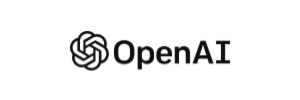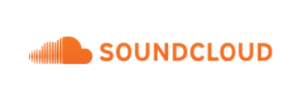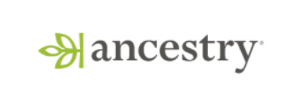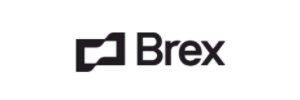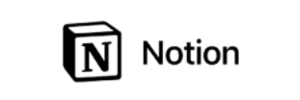Product Updates
Time to Complete Metrics on WHN
Funnels are a first-class citizen on Statsig WHN Experimentation. You can specify order, conversion windows, sessions, and more to build a clear picture of user journeys in your product. Now, you can also use funnels to measure “time to complete” a funnel in experiments.
These metrics, alongside the funnel completion rate, give a much richer view into what’s going on with users. For example - success rate didn’t change, but did your changes make your signup flow faster, or slower?
This is a valuable view for anyone who has a series of actions they care about their end users being able to do in a timely fashion - and it’s available to all Statsig Warehouse Native users today!
Funnels++ on WHN Experiments
Funnel metrics are one of the most popular metric types in product analytics. They are especially helpful to measure user journeys through a series of steps. For example, if you want to measure user conversion through a subscription flow, e.g. Start → Description Page → Payment Info → Confirm; or identify pain points in a registration flow, e.g. Welcome Page → Ask for Phone Number/Email → Authentication → Logged-in Page.
Statsig has had powerful funnels you can analyze for experiment impact in Warehouse Native for a while now, including session-level funnel metrics. Now, we’re rolling out even more enhancements. These include:
Configurable completion windows per-step, i.e. how long this step can take to occur after the previous step
Treating the “exposure” of the experiment as the implicit start event of the funnel, meaning your reported funnel conversion rate maps to the actual rate at which people finished them in your experiment
Built-in allowance for timestamp noise, which is useful to mitigate deviations in logging; this includes control over comparison type, and a configurable grace period for clock jitter
For more information about this feature, you can check the documentation. These features are available to all Statsig Warehouse Native users today.

⏰ Time Period Comparison in Funnels
You can now compare conversion funnels across different time periods. Now, you can select a specific comparison range—1, 7, or 28 days ago—and view a side-by-side comparison of the entire funnel for each step against the selected time period.
This feature allows you to observe how product changes impact user behavior over time. By comparing different periods, you can easily identify trends, assess the effectiveness of recent changes, and make data-driven decisions to improve your funnel strategy.
Time period comparisons are available in all funnel views including Conversion Rates, Time to Convert, and Conversion Rate over Time.

% Percentage-Based Metric Grouping
We’re excited to announce a new feature that makes it easier to understand metrics in context. You can now view metrics broken down by (grouped-by) an event property, expressed as a percentage of the total metric value, available in both bar charts and time series line charts.
This update allows you to quickly gauge the proportionate impact of different segments or categories within your overall metrics. For instance, you can now see what percentage of total sales each product category represents over time, or what portion of total user sessions specific events constitute.
By presenting data in percentages, this feature simplifies comparative analysis and helps you focus on the relative significance of different data segments.
⏳ Funnels - Time to Convert Improvements
We’ve made some quality of life improvements to the Time to Convert view in Funnel charts.
We now indicate where median time to convert
We support custom configuration for the conversion time window to examine. You can now adjust out automatically configured distribution chart by defining a time window to examine by bounding it with a minimum and maximum conversion time. You can also set the granularity of your analysis by selecting a interval size.
Together these quality of life improvements make it easier to better understand the distribution of times it takes to convert through funnels, and zoom in on specific areas in that distribution for more granular understanding.

📊 Distribution Analysis of Event Property Values
You can now analyze distributions for any numerical property on an event, This removes the limitation of only allowing distribution analysis on the default “Value” property. This enhancement provides you with the flexibility to explore and visualize distributions across diverse numerical properties such as session length, purchase amounts, or any numerical property associated with specific events.
This refinement allows for a comprehensive view of the distribution’s shape, going beyond specific percentiles like p90. This broader perspective is useful for identifying significant points within the distribution, helping you detect trends, pinpoint anomalies, and address potential issues more effectively.

Introducing Stop New Assignments for Experiments
We're excited to launch Stop New Assignment, a new decision type for experiments in Statsig. This feature allows you to halt new user enrollments in an experiment while continuing to analyze the results for previously exposed users.
Example Use-case
Stop New Assignment offers flexibility in various scenarios. For instance, consider an e-commerce company running an experiment to measure the impact of discounts on repeat purchases. With a limited budget, you may need to cap the number of discount offers. However, measuring long-term effects on repeat purchases requires ongoing analysis for an extended period. Stop New Assignment addresses this challenge by allowing you to stop user enrollment once you've reached your budget limit while maintaining result analysis to assess the impact on repeat purchases.
Implementation in Statsig
To implement Stop New Assignment, simply select it from the Make Decision dropdown in your experiment interface. Note: this feature requires Persistent Assignment to be configured.

For detailed information on Stop New Assignmet, please consult our Statsig Docs. We value your input and encourage you to share your feedback and suggestions for future enhancements.
Update email notification preferences in Statsig
Statsig users can now turn on/off their email notifications in the Statsig console settings. Simply go to My Account page in the Project settings and update your preferences under the Notifications tab.
This is a especially useful for teams who are Statsig very frequently and might want to turn off specific categories of emails to manage their inbox.

We hope that this helps you reduce clutter in your inbox while still allowing you to stay on important aspects of your projects in Statsig. As always, we welcome your feedback and suggestions for further improvements.
ID Resolution++
A common problem in experimentation is trying to connect different user identifiers before or after some event boundary - most frequently signups. This often involves running an experiment where the unit of analysis is a logged out identifier, but the evaluation criteria for the experiment is a logged-in metric (e.g. subscription rate, or estimated lifetime value).
Statsig has upgraded our ID resolution solution to handle multiple IDs attached to one user. ID resolution. In addition to the strict 1-1 mapping that we already support, we now offer first-touch mapping to handle 1-many, many-1 and many-many mappings between different ID types. This is extremely flexible and enables use cases like:
handling logins across multiple devices
mapping users to metrics from different profiles or owned entities
For more information about this feature, check out the documentation. This option is available to all Statsig Warehouse Native experimenters!

🎛️ Global Dashboard Filters
We’ve introduced Global Dashboard Filters, a new feature that allows you to apply property filters across all charts on your dashboard at once. This makes it easier to scope your analysis to specific properties and other criteria, with the results reflected across every chart.
With Global Dashboard Filters, you can efficiently narrow down your analysis to explore insights from different angles, ensuring that each chart on your dashboard provides a consistent and relevant view of the data. This feature simplifies your workflow and helps you focus on the most important aspects of your analysis.

Loved by customers at every stage of growth
